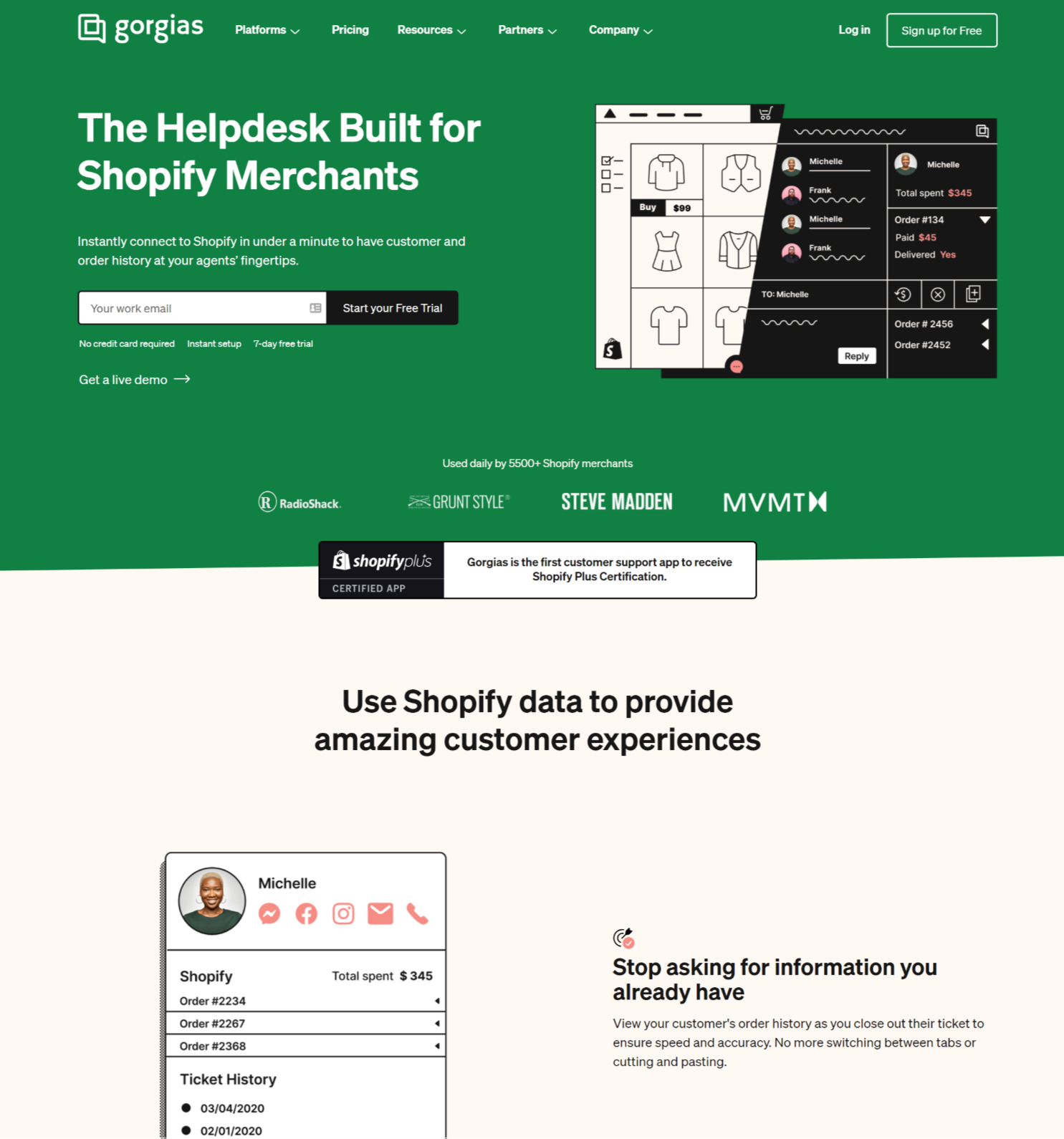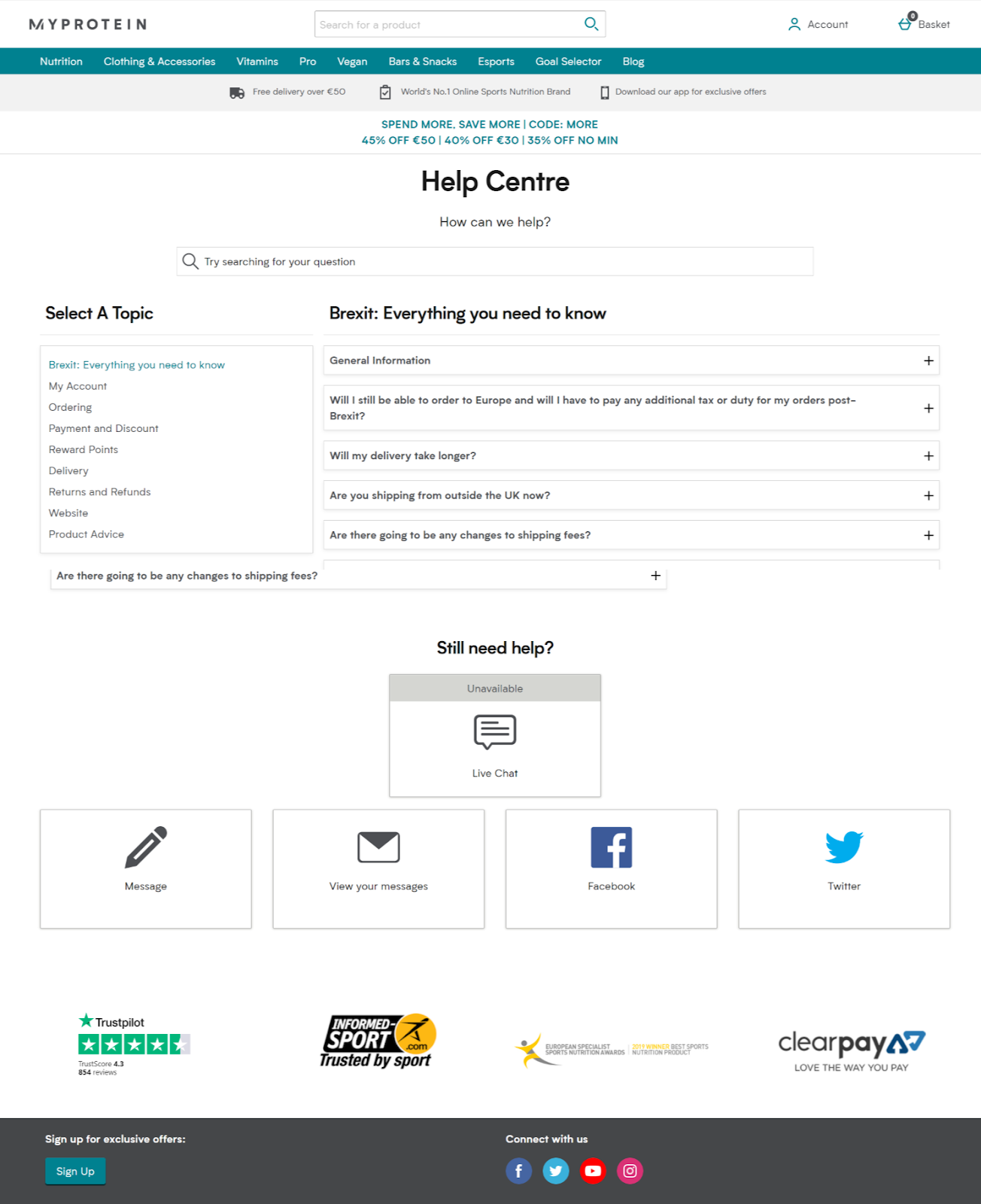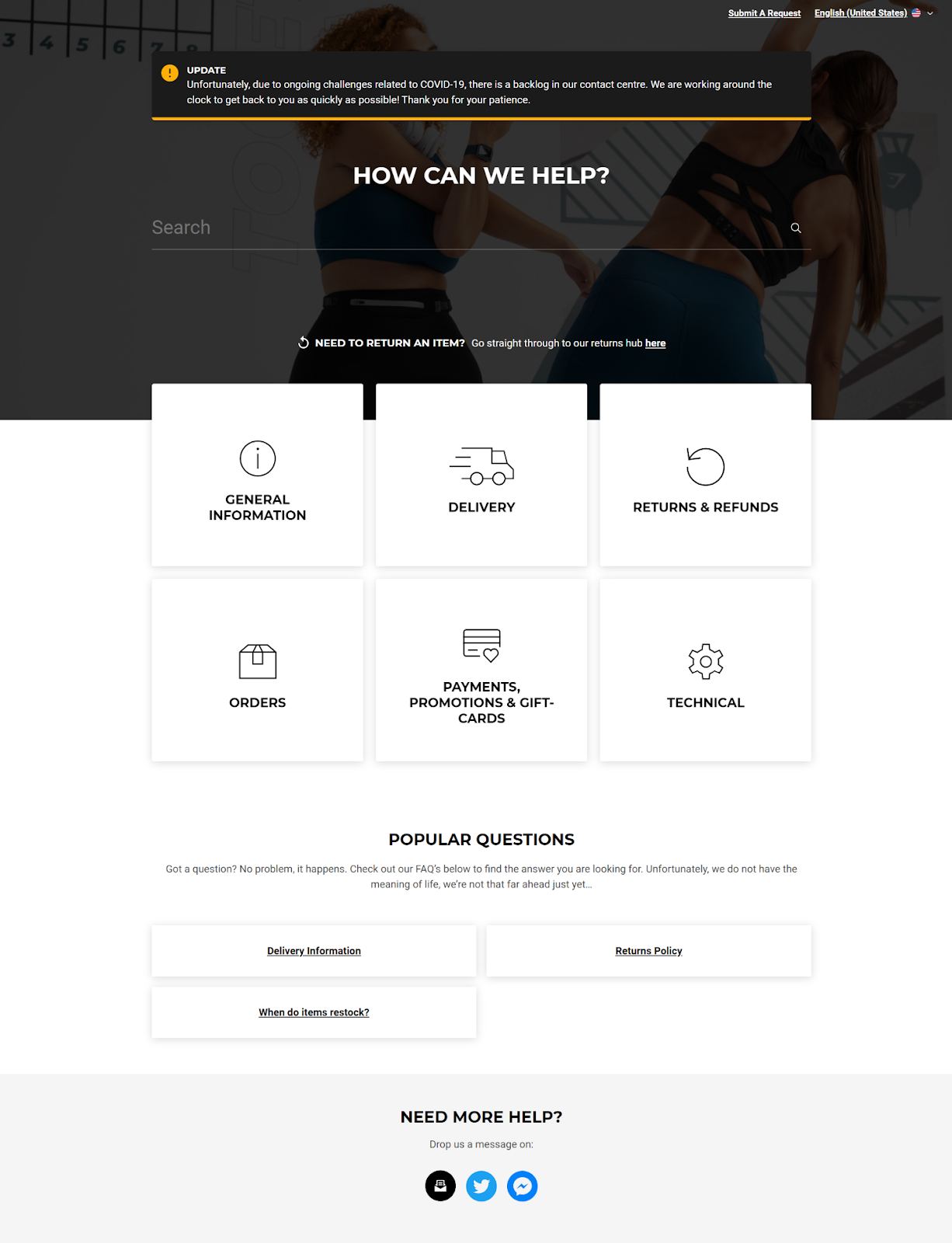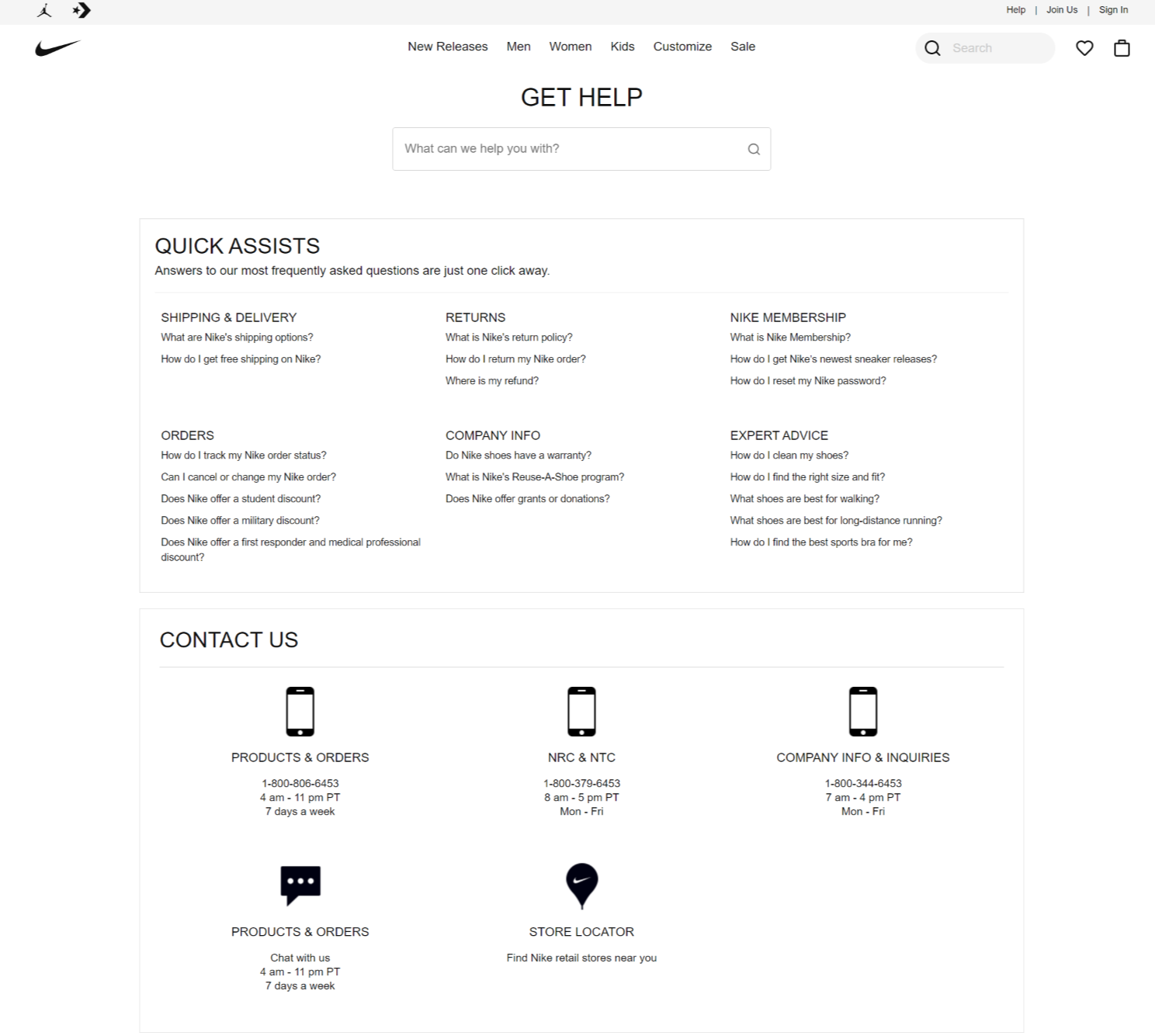Ecommerce customer service is your secret weapon in 2021.
With big guns like Amazon and Walmart dominating the ecommerce landscape, competition is fierce.
And trying to get an edge in areas like logistics or pricing will be a seriously tough battle.
But customer service is one battlefield where the odds of victory remain tipped firmly in your favor.
Think about it: today’s big online retailers have so many customers that, for the most part, they don’t have the resources to leave a lasting impression.
And as well find out, that lasting impression is worth its weight in gold.
So, without further ado, let’s jump in and learn how you can take your ecommerce customer service from zero to hero and create super-fans who’ll shop with you for life.
What is eCommerce customer service?
In a nutshell, eCommerce customer service the term used to describe how businesses provide support to online shoppers.
It covers everything from helping customers choose the right products to solving issues when things go awry.
In the past, superb eCommerce customer service was thought of as ‘nice to have,’ but nowadays it’s a prerequisite to success.
For example, think about these stats:
- 90% of Americans use customer service as a factor in deciding whether or not to buy from you
- 77% of customers would recommend a brand to a friend after having a single positive experience.
- 93% of customers are likely to make repeat purchases with companies that offer excellent customer service.
- 78% of customers have backed out of purchasing due to a poor customer experience.
But here’s the thing, despite how much we know about the benefits of excellent customer service, there’s still a glaring discrepancy in the industry.
Over 80% of online retailers claim to deliver excellent customer service, while at the same time, only 8% of customers agree.
That means there’s a tremendous opportunity to rise above the compeition and become a brand your customers genuinely love.
The fact is that as consumer expectations around support continue to rise, there’s going to be a clear divide between companies that people trust and companies that get left behind.
Let’s figure out how to get you into the former category as fast as possible.
What Makes Good eCommerce Customer Service?
Before you leap into overhauling your customer service, you need some idea about what your ideal destination will look like from a customer perspective.
A big part of this will be measuring customer satisfaction metrics. But equally important is to develop your support around core experiences that your customers value.
LivePerson’s ‘Connecting with Consumers’ report revealed that the six most important characteristics of an excellent customer service experience are:
- Get the issue resolved promptly.
- Get the issue resolved in a single interaction.
- Friendly customer service representatives.
- Secondary follow-up with the same service rep if necessary.
- The ability to record a copy of the interaction.
- Receiving a follow up afterward to ensure satisfaction.
Think of these outcomes as a rough checklist for developing your customer service strategy. Take each outcome individually and figure out a way to make it happen consistently within your business.
It’s wise to start from the desired outcome and work backward. For example, ask yourself, ‘How can we get issues resolved faster to make customers happier?’.
Then brainstorm a list of solutions (like offering a click-to-call widget on your Shopify store 😎) and work through each one until you’ve cracked the code on what works.
Sounds simple, right? Well, let’s break down several practical ways you start to advance towards achieving a superior customer experience.
5 Ways to Improve Your Ecommerce Customer Service
Fantastic ecommerce customer service doesn’t happen by accident. Here’s how to build the platform that keeps customers beaming from ear to ear:
1. Choose A Helpdesk That Integrates With Your Store
The email inbox is where it all begins.
When you’re just starting, a simple GSuite account and an hour a day can be enough to handle all of your customer’s needs.
But as you scale and tickets start pouring in, that single email inbox can feel like trying to mow your lawn with a nail scissors.
That’s where the right customer support helpdesk can make all the difference. At a minimum, you want a helpdesk that lets you leverage a shared inbox to streamline your workflow.
Look for a tool that tracks and records customer interactions over time so that support reps can tailor interactions on the fly. Plus, ideally, you want to be able to pull conversations from multiple channels into one place.
Bonus points if the helpdesk also has features like autoresponders and personalization to save time and help keep the human touch, even as your customer base starts to grow.
For Shopify specifically, three e-commerce helpdesks worth checking out are:

Trust us; a quality helpdesk or ticketing system is a foundation that’ll allow you to build top-tier customer service.
Compared to a standard email inbox, you’ll be more organized, doubly efficient, and empowered to interact with customers in a way that makes them feel heard.
2. Create Self-Service Resources
Newsflash: customers don’t always want to talk to support (introvert gang, where you at?)
For smaller issues, modern consumers actually prefer to find answers on their own if you make the information available to them.
Creating a knowledge base empowers prospective customers to make better purchasing decisions and find helpful answers to common questions.
Here’s an example from food supplement company MyProtein:

Think of it is as double-win: a way to simultaneously boost customer satisfaction while also reducing your support team’s burden.
Think of your knowledge base like an FAQ page on steroids.
There are a few apps that’ll help you create a knowledge base – some of the best are:
We won’t cover the ins and outs of creating a knowledge base in this article (there’s plenty of guides on the web!), but here are some best practices to keep in mind:
- Start with your FAQs: scour your helpdesk to find the questions customers ask most often and display answers to these on your site.
- Keep things concise: customers want answers, not a fill of prose
- Use Media: If videos or illustrations can get an issue resolved faster, use them.
- Make it organized: Use categories and search bar so users can navigate as quickly as possible to the info they need
- Provide other support options: if your help center can’t help, make it easy for customers to reach you
- Don’t sell: selling in your help center is like selling in a support ticket. It’s shady, and customers will sniff your intentions a mile off.
For inspiration, here are three impressive examples of eCommerce help centers:
a) Gymshark Help Center

b) Nike Help Center

c) Yeti Help Center

3. Focus on Fast Responses
The basis of online shopping is convenience. Unsurprisingly, modern customers expect speedy responses to their requests.
But how fast do you need to be? Well, eConsultancy, reported that 31% of customers want instant online help, while 40% expect to receive assistance in less than 5 minutes.
Yikes. Ok, that speed may seem unrealistic to many eCommerce entrepreneurs. And it may well be impossible for you to achieve currently.
But that doesn’t mean you should give up. Because when it comes to overall customer satisfaction, it appears to be more important to ‘not be slow’ than to be ultra-fast.
Three great ways to reduce customer response time are:
- Use a Helpdesk: Throwback to point one, but a helpdesk will allow you to prioritize tickets, so nobody is left waiting a week for a reply.
- Set-up Auto-responders: Sometimes customers just want to know their request is received and help is on the way
- Hire Support Specialists: More hands-on-deck can manage large volumes of support without tickets backing up
- Leverage Templates: Instead of coming up was a new response to every request, templates can save you buckets of time for commonly asked questions.

Source: Groove HQ
4. Meet Customers Where They Are
The ways customers interact with businesses are changing every day. The good old days of providing support exclusively via email are over.
Delivering awesome ecommerce customer service is about meeting customers where they are most comfortable. You can no longer sit back and expect shoppers to inconvenience themselves for you.
That means you need to go multi-channel. The five channels of modern ecom customer service are:
- Phone
- Live chat
- Social
- Knowledge base
We’ve already discussed how to build a knowledge base above, so let’s park that for the moment and talk about how you can add the other channels to Shopify.
To provide phone support, EasyCall is a great solution that’ll allow you to buy a business number and add a click-to-call widget to your store.

For social media, a tool like Hootsuite can help you monitor platforms for mentions of your brand and allow you to respond promptly. Check out how Nike has a dedicated support account to answer customer tweets:

Several apps’ll allow you to offer live chat on your store, but two of the best are Tidio and Reamaze. You’ll be able to create a similar widget to this one on make-up brand Cheekbone’s homepage:
The biggest challenge you’ll face in delivering support across multiple channels is to sync customer interactions for a seamless experience on their end. Some of the helpdesks outline above can help with this.
However, don’t let the size of the task put you off. The reality is that the more ways you give a customer to contact you, the happier they’ll be. Even adding just one more channel is a great way to start.
Measure & Refine Your Processes
Incredible ecommerce customer services is an iterative process. There’ll always be ways you can tweak and refine your methods to produce better results.
The best eCommerce businesses track data and use it to continually modify the way they deliver service to their customers.
Evaluating performance channel by channel, tracking response times, and analyzing trending requests is essential to join the elite ranks of outstanding ecommerce customer service.
Having a process in place to gather data and translating it into actionable insights is at the very heart of what it means to be a customer service oriented business.
Ecommerce Customer Service is The Foundation of Your Business
Too often, we think of customer service as a a box that needs ot be ticked.
But the reality is in today’s competitive industry; customer service sets good companies apart from bad companies.
For eCommerce specifically, this means:
- Using a HelpDesk that integrates with your store
- Providing useful self-service options
- Responding quickly to customer requests (with a smile!)
- Being available across multiple channels (email, chat, phone, social, etc.)
- Using customer data to continually adjust and improve your customer’s experience
Delivering an incredible customer experience isn’t easy. It’s not something you can achieve overnight. However, levels of service exist on a spectrum.
That means you can start to improve your ecommerce customer service right now with one small baby step – and from there, the sky’s the limit!
And now, over to you! What is your ecommerce customer service philosophy? Do you have anything to add to our tips? Let us know in the comments below!




